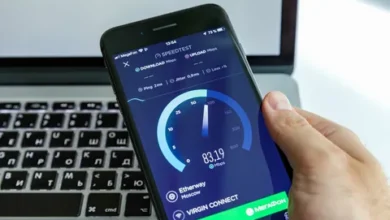How to Monitor Internet Usage on Home Network- Quick Answer

In today’s digital age, keeping track of your home network’s internet usage is more important than ever. Whether you want to manage bandwidth, keep an eye on connected devices, or ensure your family’s online safety, monitoring your home network usage can help.
In this guide, we’ll explore how to monitor internet usage on a home network effectively, what tools to use, and best practices to get accurate insights.
Why Monitor Internet Usage on Your Home Network?
Why Monitor Internet Usage on Your Home Network?
Monitoring internet usage has several benefits, including:
- Bandwidth Management: Ensuring no single device hogs the bandwidth.
- Device Tracking: Identifying all devices connected to your network.
- Data Cap Awareness: Preventing overage fees on metered connections.
- Security: Detecting unauthorized access or unusual activity.
- Parental Controls: Keeping an eye on your children’s online activities.
By learning how to monitor internet usage, you can optimize your network’s performance and security while maintaining peace of mind.
Tools to Monitor Internet Usage
There are several tools available—both hardware and software—that allow you to keep tabs on your internet usage. Below is a table summarizing these tools:
| Tool Type | Examples | Features |
|---|---|---|
| Router Analytics | Built-in Router Tools | View connected devices, real-time bandwidth |
| Third-Party Software | GlassWire, Wireshark | Bandwidth monitoring, packet analysis |
| ISP Tools | Provider Dashboards | Data usage summaries, alerts for overages |
| Mobile Apps | Fing, NetSpot | Device tracking, Wi-Fi troubleshooting |
Step-by-Step Guide to Monitoring Internet Usage
Here’s how to get started:
Step 1: Access Your Router’s Dashboard
- Open a web browser.
- Type in your router’s IP address (e.g., 192.168.1.1).
- Log in with your credentials (usually found on the router).
- Navigate to the usage or analytics section.
Step 2: Identify Connected Devices
- List all devices connected to your network.
- Remove unknown or unauthorized devices.
Step 3: Use Monitoring Tools
- Install third-party software like GlassWire for advanced insights.
- Configure alerts for unusual activity.
Step 4: Set Limits and Prioritize Devices
- Use your router’s settings to allocate bandwidth or prioritize devices.
- Example: Give higher priority to work laptops over gaming consoles.
Step 5: Analyze Trends and Adjust
- Regularly review usage data.
- Adjust settings to prevent excessive bandwidth consumption.
Best Practices for Monitoring Internet Usage
- Update Router Firmware: Ensure you have the latest features and security patches.
- Use Strong Encryption: Protect your network with WPA3 encryption to avoid unauthorized access.
- Educate Household Members: Encourage responsible internet habits.
- Enable Parental Controls: Set filters to monitor children’s online activity.
Expert Quote:
“Monitoring your home network is not just about managing bandwidth—it’s about maintaining security and ensuring your family’s online experience is both safe and seamless.” – John Doe, Network Security Expert
Common Challenges and How to Overcome Them
1. Limited Router Features
- Solution: Upgrade to a modern router or use third-party software for better monitoring.
2. Unusual Bandwidth Spikes
- Solution: Check for malware or unauthorized users with tools like Wireshark or Fing.
3. Data Cap Overages
- Solution: Regularly monitor ISP-provided dashboards and set alerts.
FAQs
Can I monitor internet usage without accessing my router?
Yes, third-party apps like Fing or ISP tools can track usage without router access.
How do I detect unauthorized devices on my network?
Check your router’s connected devices list or use apps like NetSpot for scans.
Is monitoring internet usage legal?
Yes, it’s legal as long as you’re monitoring your network and not violating privacy laws.
How can I reduce data usage?
Optimize streaming quality, limit automatic updates, and educate family members.
Final Thoughts
Learning how to monitor internet usage on a home network is essential for optimizing performance, ensuring security, and managing data consumption effectively.
By leveraging router analytics, third-party tools, and ISP resources, you can stay informed about your network’s activity and take proactive steps to address issues.
With the right tools and practices, you can maintain a secure and efficient internet experience for everyone in your household. For more Home Internet-related information check the nowinternet.




